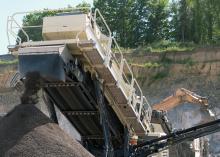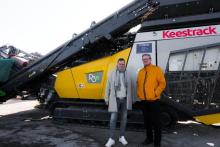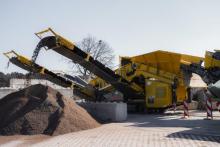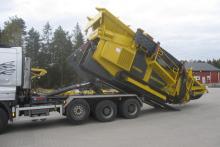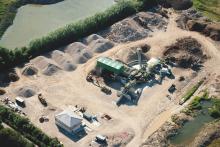
An old-established Belgian quarry has invested in new equipment to improve efficiency
The family business Bertrand has been an established name in the Belgian Ardennes region for generations.
The quarry in Bra sur Lienne is known for its blue and brown slate, which is used in the construction of walls, roofs, terraces, floors and dry walls (without mortar). The slate is also used for monuments.
For over 50 years, mining at the quarry was usually done manually as the quarry operates in a niche market where colour, size and shape of the stones are selected on demand and receipt of the order.
Bertrand delivers mainly directly to end users and local contractors.
However, this small quarry now owns a
The manual selection of material is now at a minimum, and this is only done for colour and on the specific shape of the stones.
The company says that another advantage is that the fines and middle fractions from the quarrying process are very specific, resulting in up to 15 times more material.
“Also, production has doubled leading to a shorter delivery time. Besides these economic solutions the Combo also provides a less labour-intensive and much cleaner working environment,” says a quarry spokesperson.
Quarry Bertrand has expanded its product portfolio because of the three different fractions in the new working process. The 0-50mm fraction is used for paving forest tracks and roads and gardening decorations and the 50-120mm fraction for drainage stone or as decorative stone.
“The choice of the Combo [the smallest screen of the Keestrack range] was an easy one after a testing period of two days. Because manual sorting is still to be done at the oversize conveyor it is essential to have picking stations on both sides. Also the speed of the hopper and the main conveyor is easy to adjust from the picking stations.
“The easily interchangeable screens of the Combo are also an advantage.”
Bertrand says that the capacity of 250tonnes/hour is more than enough in this application, and that the possibility of doing a real test played an important role in its choice of the Keestrack.

